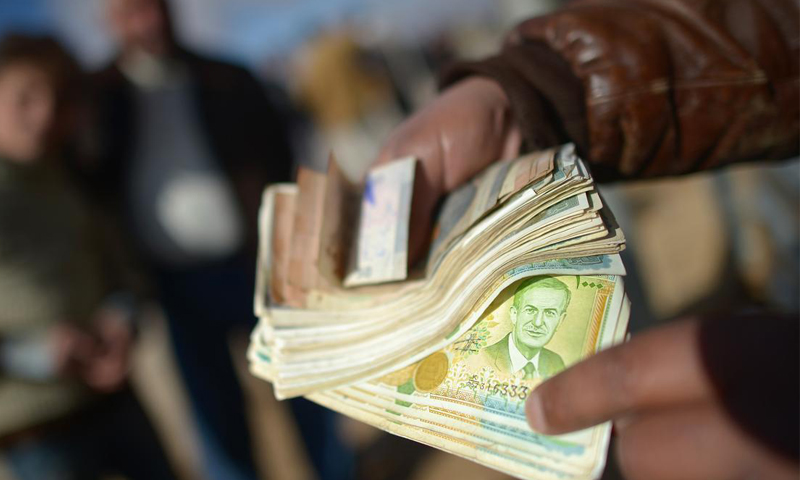Printed Edition || No: 221
The modern Syrian pound has collapsed to its lowest levels in recent times, plunging to an exchange rate of 625 pounds to the U.S. dollar. There are fears of a continued decline, with many demanding the government to take urgent action in order to bring relief to the Syrian people.
As could be expected, the collapse of the Syrian pound–a loss of more than 90 percent of its value–was accompanied by a significant rise in prices. This has only exacerbated the suffering of the Syrian people, 87 percent of whom live below the poverty line, according to a recent poll conducted by The Syrian Centre for Opinion Studies.
A comparison of prices between 2010, before the start of the revolutionary movement, and today are striking. A typical employee’s salary did not exceed 10,000 pounds a month, and this was sufficient to cover the needs of a family consisting of three members. However, with the rise in prices, this salary would have to be six fold–at least 60,000 pounds– in order to cover these needs today, according to the study.
Back in 2010, the exchange rate was 47 pounds to the U.S. dollar. Today, with an exchange rate of 625 pounds, there is a considerable difference between the prices of basic goods that the average citizen needs in their life. For example, 1,000 Syrian pounds used to be enough for one citizen to get by for one week. A kilo of meat cost 600 Syrian pounds; a plate of eggs cost 90, a kilo of chicken could be bought for 90, in addition to a kilo of rice for 90. Sugar cost 30 pounds, and a bundle of bread was 15 pounds. In addition, a falafel sandwich cost 15 pounds and a shawarma was only 35; a box of Coca-Cola cans–two liters and a quarter–cost 35 pounds.
Compare these prices to the cost of living in 2016, where the total price of the previously listed items reached 8,500 pounds. One thousand pounds is no longer enough to buy an ounce of meat because the new rate for a kilo of meat is 4,900 pounds. A plate of eggs costs 950 pounds. A kilo of chicken costs 850 pounds, while a kilo of sugar and rice can be bought for 450 and 475, respectively. A bundle of bread goes for 50 pounds. A small bite of falafel costs 15, after the price of a falafel sandwich soared to 200 pounds.
The Syrian people anxiously anticipate that prices will continue to rise, as a result of the lack of improvement in the currency index. They are intensely fearful of the exchange rate, especially the looming possibility of 1,000 pounds to the U.S. dollar. This severe exchange rate, and the government’s failure to prevent the pound from collapsing, threatens the collapse of the Syrian economy and the replacement of the local currency with foreign currency, so-called dollarization.

